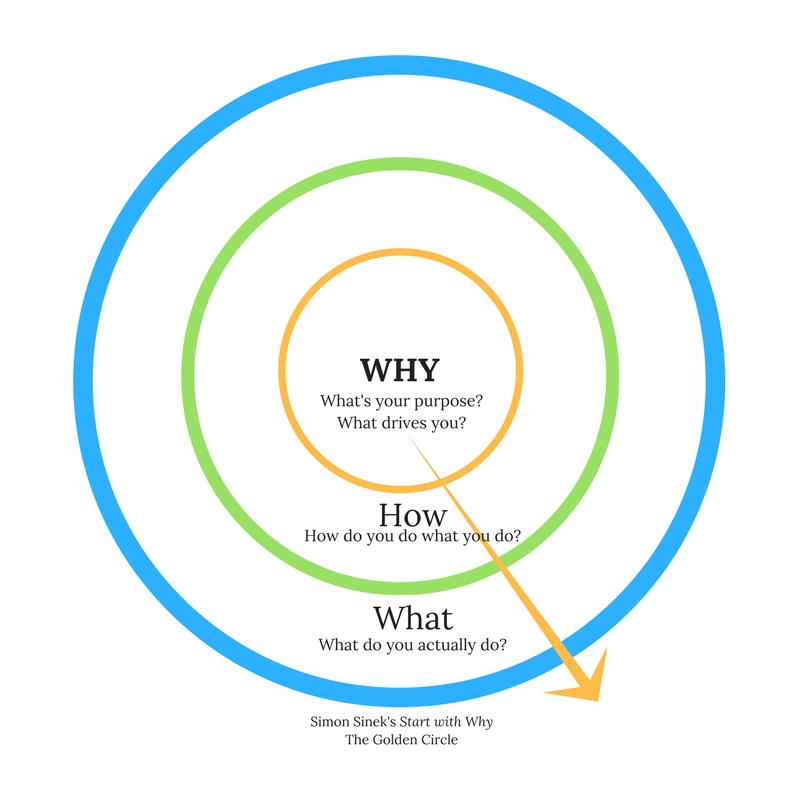One of the most thought-provoking books I read last year was Simon Sinek’s Start with Why: How Great Leaders Inspire Everyone to Take Action. In his book, Sinek talks about how successful individuals and organizations communicate. Instead of explaining what they do, they start with why they do it.
- What is our purpose?
- What drives us?
- What are we passionate about?
Explaining what we do is a lot simpler than putting our why into words. It is also less effective. “There are only two ways to influence human behavior,” Sinek says, “you can manipulate it or you can inspire it.” The way to inspire behavior is to clearly articulate what we believe. Those who believe what we believe will follow us, buy our product, or invest their time and energy into our cause.

School Leaders Must Articulate Their Why
Though much of the book focuses on businesses and industry, I was struck by how relevant Sinek’s words in the context of education. I’ve worked with so many school districts that are embracing technology and blended learning models, but they do not communicate why this shift is important to teachers. Without a clear sense of purpose, it is easy for educators to become disillusioned and frustrated by the time and energy required to shift their teaching practices.
The best way to approach any significant change is to start with why. Be crystal clear about the value of the change and make sure everyone within the organization understands the why driving the change.
- How will it improve the students’ experience as learners?
- How will it free teachers to spend more time on the aspects of their job that they enjoy?
- How will this create more dynamic and relevant learning?
If leaders are clear about their why, teachers are more likely to buy in and take risks. Similarly, teachers will be more effective if they articulate their why for themselves and explain their why to students.
An Exercise: What’s Your Why?
As we begin a new year, I encourage every teacher to take a few minutes to think about why you teach and then complete your version of the golden circle pictured above.
- Start with why you teach.
- What is it about your job that excites you?
- What drives you to work with students?
- Ultimately, what are you trying to achieve?
- How do you do what you do?
- How are you attempting to achieve your why?
- What strategies do you use to manifest your why?
- What do you do each day to stay focused on your why?
- What do you do?
- When people ask you what you do, what do you say?
- What are your various roles?
This exercise is harder than it sounds. We all know on an unconscious level what excites, motivates, and drives us, but putting that into words is tough. Several months ago, I sketched out my own golden circle with my why in the middle, my hows in the center ring, and my whats in the outer circle. When I feel frustrated or disillusioned, I revisit my why. It reminds me why I am in education. It is grounding and inspiring.
I hope this exercise serves to ground other educators as we begin 2018! Happy New Year! Thank you for being part of my learning network.


4 Responses
[…] Tucker is not planning an education-related resolution for 2018, but she wants educators to ask themselves WHY they’re in the classroom. You can read her thoughts on that here. […]
Hi Catlin,
I love your blog, and have 2 of your books! I am a tech coach at my school (1:1), and we have done a lot of great work getting technology into the classrooms. In an effort to extend our audience, do you know of any schools looking to Skype or connect with similar efforts?
Hi Meg,
Maybe one of my other readers can connect with you to via Skype or GHO to chat about all things technology! There are some districts doing some amazing things.
Catlin
[…] The beginning of the school year is a time of renewed energy and excitement, which makes it the perfect time to articulate our WHY. Once you have articulated your why, capture it! Make a visual reminder of why you teach and post it somewhere in your classroom where you can see it each morning. Reread your why statement each morning before students flood into your classroom. This daily reminder of why you teach will help you stay focused on your purpose at the start of each day. Start the New Year by Articulating Your WHY […]